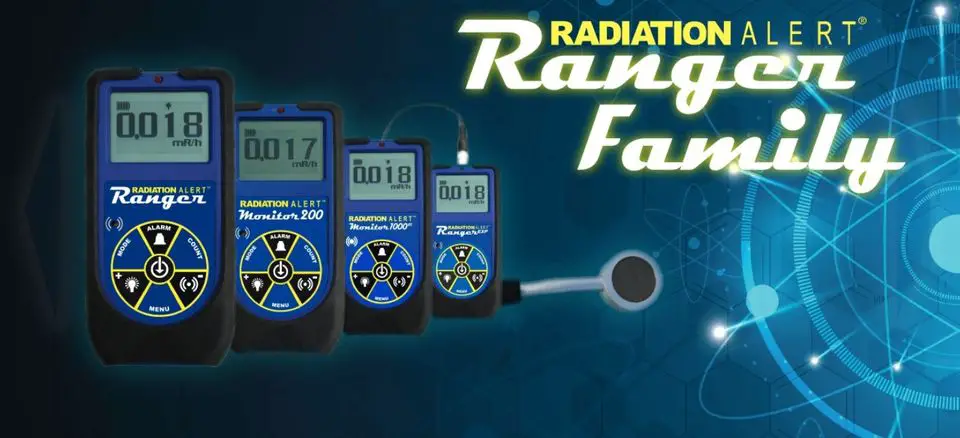In an ongoing effort to make shopping for radiation detectors a little less burdensome, this article presents a comparison of two popular detectors, one analog and one digital. The difference between analog and digital turns out to be minimal in terms of performance and, often, the prices are similar. So, this short comparison breaks down the key specs of two radiation detectors designed for similar purposes, one analog and one digital. You’ll see that they have many similarities in terms of sensitivity to different types of radiation but differ in several details.
Radiation Alert® Monitor 4
This is an analog uncompensated Geiger-Muller type detector designed for general surveying as well as for checking Cesium-137 gauges. It detects alpha, beta, gamma, and x-rays at energy levels about 40keV. Within that range the uncompensated Geiger-Muller tube offers accuracy of plus or minus 15% reading Cs137 sources 10% with NIST calibration. You can get readouts in CPM and mR/hour or, with a µSv/hour with the optional SI scale meter. Alerts come in the form of audible beeps. The three response ranges are similar to what you get on Radiation Alert digital radiation detectors:
- 0-0.5, 0-5, 0-50 mR/hour
- 0-500, 0-5,000, 0 to 50,000 CPM)
- 0-5, 0-50, 0-500 µSv/hour
Energy sensitivity is 1,000 CPM/mR/hr (based on Cs137).
This is a wand-type detector so it may be a little easier to use in some cases that regular handheld detectors like the Monitor 1000EC. The Monitor 4 works in a wide range of temperatures (-4° to 131° Fahrenheit) and at humidity levels of 10% to 70% without a loss of sensitivity. You can get 2,000 hours of life from the included 9-volt battery.
Applications are broadly similar to the 1000EC: checking industrial gauges (moisture, density, or level gauges) that contain Cs137, general surveys, personal protection, and locating radiation sources. Both instruments can record readings for downloading later.
Radiation Alert ® Monitor 1000EC
This is a digital monitor designed for similar radiation detection purposes – reading gauges containing Cesium-137 and general surveying. This is also an energy-compensated, halogen-quenched Geiger-Muller detector, though it is digital not analog. This detector also picks up gamma rays and x-rays down to an energy level of 40 keV. It detects radiation in the range of .001 to 1,000mR/hr or .01 to 10,000 µSv/hour. This can also be used to detect counts at a level of 0-450,000 CPM or 0-7,500 CPS. Energy sensitivity is much better than the Monitor 4 at 450 CPM/mR/hr. Like the 4, the 1000EC uses a beeping indicator.
As with most radiation detectors the 1000EC is highly tolerant of temperature and humidity differences. The operating range is 14° to 122° Fahrenheit and 10% to 70% humidity. That temperature range is a little narrower than with the Monitor 4 but either unit is usable in all but very cold settings though not in extreme cold. The battery is good for 800 hours (background) but you can also power the 100EC through a USB port.
Both the Monitor 4 and the Monitor 1000EC offer the option of NIST calibration. It is suitable for the same tasks as the Monitor 4. Both detectors are suitable for detecting and reporting a wide range of radiation events and frequencies but the Monitor 4 offers more battery life. Similarly, the two detectors can use Observer software for Windows and OS devices.
Radiation Detection Experts
S.E. International sells a variety of analog and digital detectors. We also sell personal radiation monitors and recalibrate detectors. If you have radiation detection needs, S.E. International has a solution. In addition to detailed radiation detector specs, you’ll find detailed digital and analog product comparison charts. Visit our site today to learn more about our product line!
0







